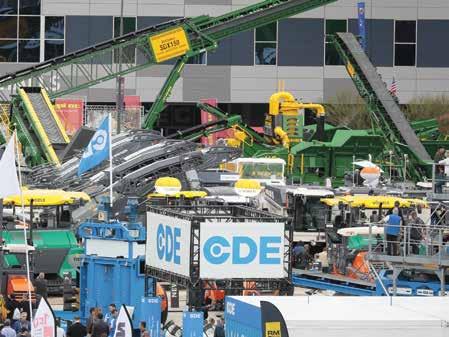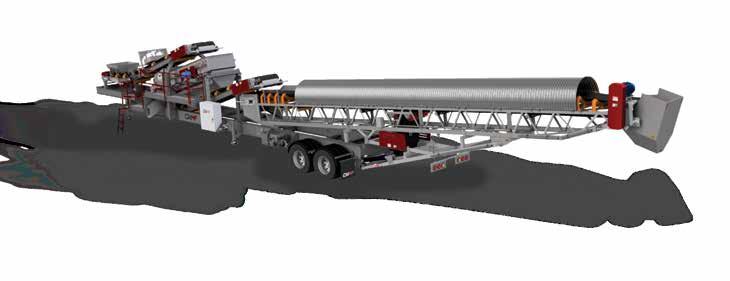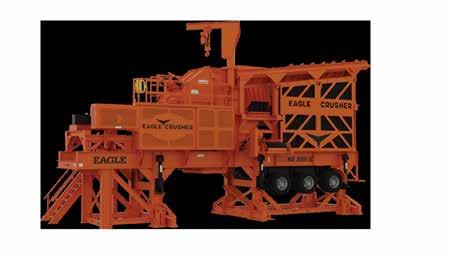
3 minute read
Hydrogen ICE Equipment
BY ASPHALTPRO STAFF
If you’re watching electric off-highway vehicle (EOHV) development, then the hydrogen internal combustion engine (ICE) should be on your radar screen as well. According to new research from Interact Analysis—a market intelligence authority for global supply chain automation from the technology used to automate factory production, through inventory storage and distribution channels, to the transportation of the finished goods—a qualitative report released November 2022 suggests hydrogen ICE vehicle shipments will hit 400,000 by 2040. That’s total vehicles including on-road and off-highway, construction and agricultural, according to Jamie Fox, a principal analyst at Interact Analysis.
“The number of registered H2 ICE vehicles is forecast to grow to 58,000 in 2030,” Fox shared in a Jan. 5 press release. “Covering all on road and off-road vehicles (including trains, agricultural equipment, trucks and passenger cars), this figure is set to see significant growth post 2030, with uptake of H2 ICE technology projected to soar to more than 400,000 shipments by 2040.”
Fox shared with AsphaltPro that several factors will slow the construction equipment sector’s adoption of this technology. “Excavators, lift and loaders could see some adoption but the percentage of the market will be very low to 2030, under 1%, because diesel machines are less expensive and well known with less infrastructure difficulty. H2 ICE can be used where there are regulations for construction in city centres, or where a company wants to try a small number of vehicles without fossil fuels to prepare for the long term, zero fossil future, or in order to showcase its green image.
“We do not see hydrogen being larger than battery electric vehicles but there are niches with opportunities, for example where the machine has to work 15-20 hours a day, which is difficult for battery electric vehicles.”
The key takeaways from the “Hydrogen ICE Market and Technology Assessment” report include how hydrogen ICE will develop as a solution in different applications; what impact regional hydrogen production plans will have; who the main suppliers of hydrogen ICE technologies are; which OEMs are developing hydrogen ICE-powered vehicles; and how the cost compares with other low- and zero-carbon solutions.
Let’s look at that last point: cost comparison.
When you change a machine’s engine, you also change the components supporting that engine, thus increasing costs.
Interact Analysis explained, “Hydrogen ICE vehicles require a series of minor changes compared with traditional ICE vehicles, including different spark plugs and other changes to materials. On their own, individual changes do not present too much of a challenge, but in combination the total cost of manufacturing the vehicle soars. In addition to this, adding greater complexity increases the potential risks once the vehicle is in mass production. Hydrogen ICE vehicles are most attractive to those companies who are most climate aware, or where battery electric alternatives are either unavailable for a particular vehicle or not fit for purpose. Without either of these catalysts for adoption, uptake of hydrogen ICE vehicles is likely to remain low in the short term. Off-road vehicles are perhaps best suited to this technology since battery electric and fuel cell alternatives face greater infrastructure challenges in off-road environments.”
Interact Analysis offered this statement comparing the H2 with other engines: “The total cost of a hydrogen engine is only slightly higher than that of a diesel engine. On average, for a class 8, 40-tonne truck, a hydrogen tank would cost around $76,000, a figure far in excess of the price of a diesel equivalent.
“However, the unit price of an H2 vehicle is still less than a FCEV alternative. Therefore, because the average cost of fuel per mile for H2 vehicles is higher than for FCEV and BEV vehicles, H2 technology is best suited to applications with low mileage/hours per day. Interact Analysis predicts that the cost of hydrogen will reduce significantly over time and, if it continues to fall at pace, it could become more competitive across a wider range of applications in the future. Although maintenance costs for H2 vehicles will be similar to those of other vehicles, fuel costs for hydrogen vehicles mean the TCO will be worse than for diesel and battery electric alternatives. Therefore, H2 vehicle application is likely to be limited to applications or regions where diesel has been legislated against or where BEV alternatives are not available.”
Infrastructure remains a key stumbling block for non-diesel alternatives.
“Due to unfavorable TCO and high fuel costs, H2 ICE vehicles are unlikely to become the market leader. Despite the many environmental benefits to the use of hydrogen vehicles, for mass adoption to occur the refueling infrastructure required must be developed and customer payback improved. We are still seeing many limitations to refueling infrastructure for battery electric vehicles so it is unlikely that we will see a significant amount of change in the H2 infrastructure for many years.”







